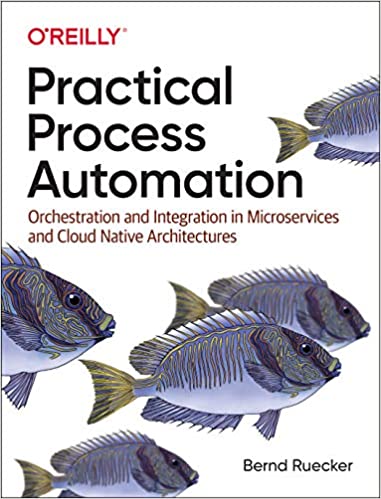Practical Process Automation #
Orchestration and Integration in Microservices and Cloud Native Architectures
In today’s IT architectures, microservices and serverless functions play an increasingly important role. But how can you create meaningful, comprehensive, and connected business solutions if the individual components are decoupled and independent by design? This book provides a framework through examples and practical advice, and reveals how you can design complex processes in such an environment to deliver true business value.

You can get this book as part of your O’Reilly subscription. You can also start a free 30 days trial
From The Back Cover #
Weaving together ideas from microservices, event-driven systems, and Domain-Driven Design, this book describes when, why, and how to effectively leverage workflows within a modern software architecture. Taking a pragmatic practitioner’s approach, it uses real-world examples and explores the pros and cons of multiple alternative patterns in detail. It should be on every architect’s bookshelf.
Randy Shoup, VP Engineering and Chief Architect at eBay
Bernd has championed and delivered developer-friendly process automation tools for the best part of the last decade. Now, in this pragmatic new book, Bernd brings that wealth of experience to show how process automation models, methods, and tools can be applied to tame the complexity of microservices and cloud-native architectures which are becoming ever more prevalent in today’s technology landscape. I highly recommend this book for architects and developers who want to add process automation thinking to their design toolkit.
Richard Tarling, Digitization & Workflow Engineering Co-lead at Goldman Sachs
Process automation has often been viewed as the antithesis of modern, agile software development: snazzy “doodleware” demos that don’t scale to real use cases, poor testability, and version control only for the fortunate ones. No one better than Bernd to show us that this perception has little to do with workflow and process automation but merely with past implementations. Seeing process automation as an extension of well-established software development methods and architectures breathes a much welcome breeze of fresh air into the field.
Gregor Hohpe, author of Enterprise Integration Patterns and The Software Architect Elevator